John Isaac begins with a story: In the 1990s, while on assignment from the United Nations to photograph the first Gulf War in Kuwait, he was helicoptered by a group of allied soldiers to the area where he intended to document burning oil wells. He hopped out of the helicopter and was surprised to see that none of the soldiers joined him on the ground. Instead, they told him they were going to a bar while he took his photos and would be back shortly. They offered one piece of advice before lifting away: “Don’t step on any land mines.”
Isaac, now in his 70s, smiles as he recounts this story to Fieldston Middle Schoolers. “The soldiers forgot about me,” he laughs. They eventually remembered the intrepid UN photojournalist, and a few hours later, picked Isaac up, his bag filled with rolls of film capturing the desolation brought to Kuwait following the Iraqi invasion.
Isaac has many stories like this, and he recounts them to the entire 7th Grade on a chilly morning in February. This is Isaac’s third time visiting ECFS — his visit coincides with the 7th Grade history unit on refugees. Each year, the students are enthralled by his tales of traveling the world, documenting some of the most significant — and oftentimes tragic — moments of the 20th century.
Isaac immigrated from India to New York as a young man. “I had 75 cents in my pocket,” he tells the 7th Graders. “And my guitar.” When he moved to the United States, Isaac dreamt of becoming a folk singer; he wanted to tell stories through songs. He never imagined that one day he would tell some of the world’s most important stories through photographs.
Isaac struggled to make ends meet, busking on street corners until, one day, a woman on the street heard his voice. To his surprise, she asked him if he’d like to join her choir at the United Nations (UN). He did so, and was also hired to work as a messenger at the UN, delivering mail around the building. Six months later, Isaac received another surprise: A photograph he’d taken in his spare time was selected for a prestigious award. The photography department at the UN saw the image and Isaac was transferred to work in the dark room. Not long after, Isaac won another award, and this time he was flown to Germany (“First class!” he beams at the students) to receive the prize. When he returned to the United Nations, he received his first assignment as a photojournalist. The following week, Isaac flew to the Middle East to capture images of the conflict between Israel and Palestine.
During his hour-long presentation, Isaac uses his photographs to share the timeline of his career. Starting with his first trip to the Middle East, Isaac shares images of war zones, famine-stricken countries, and refugees in mid-flight escaping dangerous nations. The students are enthralled, gasping when a particularly striking image fills the screen.
Isaac speaks candidly about the moral difficulties of the job, of needing to stay behind the camera instead of offering to help those around him. On multiple occasions, Isaac says, he chose to put down his lens and help. Every time he did so, he was reprimanded by his editor — but he has no regrets. “If you see that someone is hurt, do you help first, or take a picture first?” Isaac asks. “If I was lying down in the street — drunk, homeless — would I like someone taking my picture?”
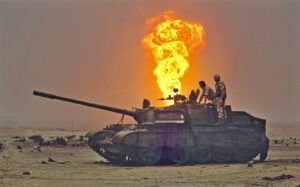
Gulf War, Kuwait, Iraq. Tank and Allied Soldiers. By John Isaac
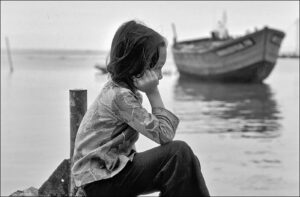
Vietnamese Boat People. Pulau Bidong, Malaysia, 1979. By John Isaac
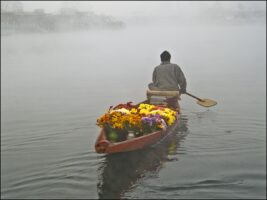
Flower Vendor in Srinagar, Kashmir. By John Isaac
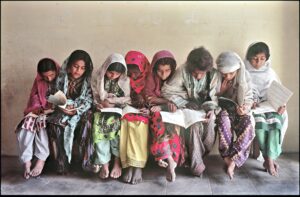
Islamic Girls in School. Karachi, Pakistan. By John Isaac
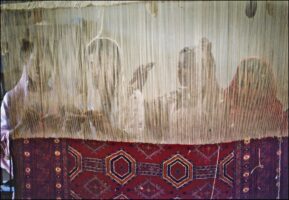
Child Labor. Young Afghani Girls Weaving Carpet, Kabul. By John Isaac

Tiger in Ranthambore National Tiger Reserve. By John Isaac
The atrocities he witnessed during his 20 years on the job eventually caught up with him. “I had a nervous breakdown,” he says. “I started to wonder if life was worth living.” Behind him, a beautiful image fills the screen — a bright yellow butterfly perched on the petals of a golden sunflower. “But then, I saw this in my neighbor’s yard. I didn’t think; I just grabbed my camera.” Capturing this image — and being able to recognize and appreciate the beauty of the natural world — revived him, Isaac explains.

Following the presentation, a smaller group of 7th Graders joins Isaac for lunch. They are eager to ask him questions about his career, photography, and the world at large. The students are particularly concerned with the fate of the refugees Isaac photographed — the 7th Grade is studying the refugee crisis in History this year. Dahlia Z. ’25 asks, “What happens if your photo of a refugee illegally crossing into a country becomes famous? Does it target that person?” Isaac assures her that this has never been the case.
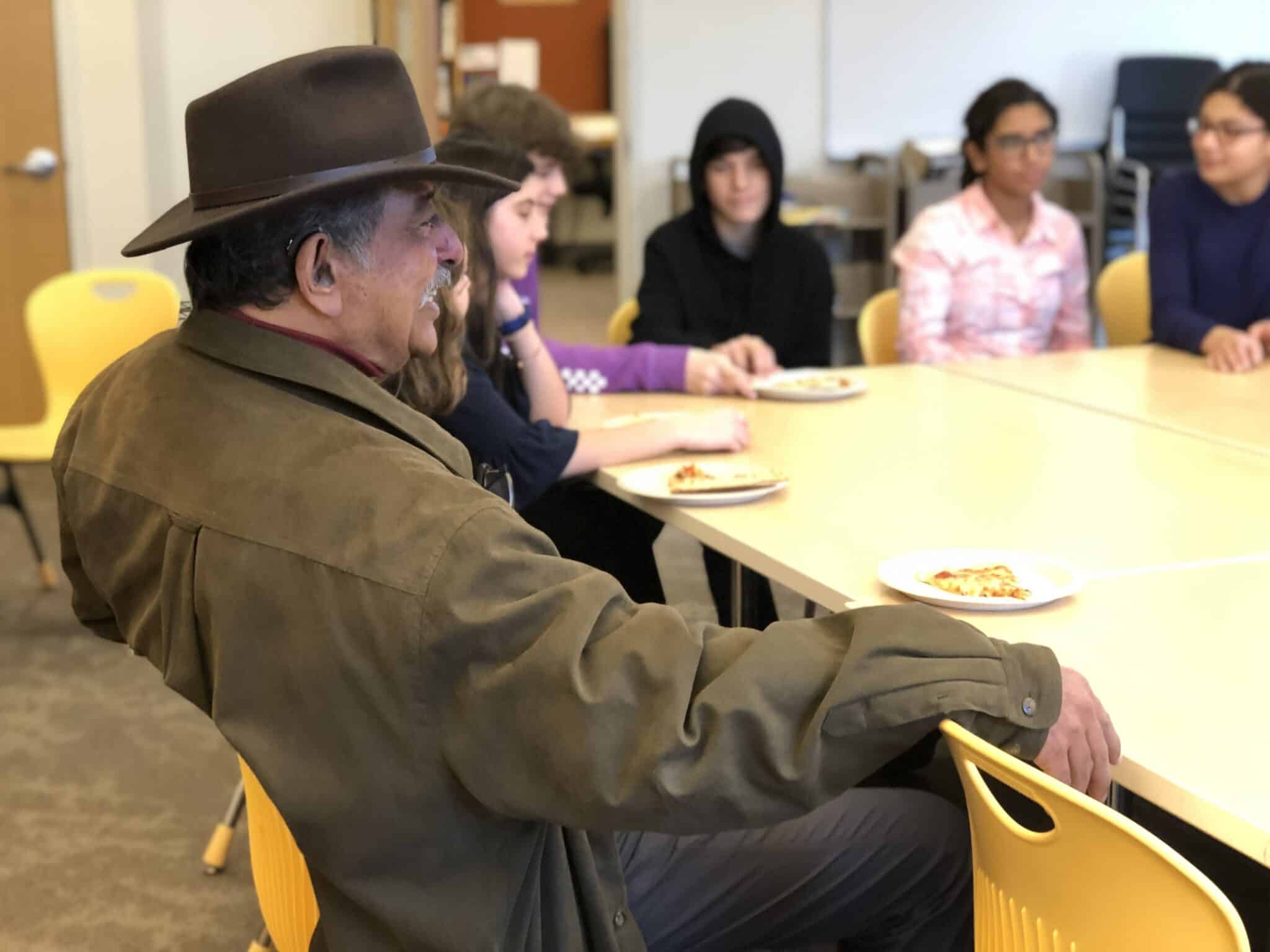
The lunch runs late, but the students could continue asking Isaac questions for hours. A few of them have tests during the next period, so they scurry to class. One student takes a piece of paper out of his backpack and asks for Isaac’s autograph.
The students have much to take away from Isaac’s visit — lessons of moral responsibility, hard work, and creativity. 7th Graders spent the afternoon looking through Isaac’s lens of the world and walked away with a whole new perspective.



